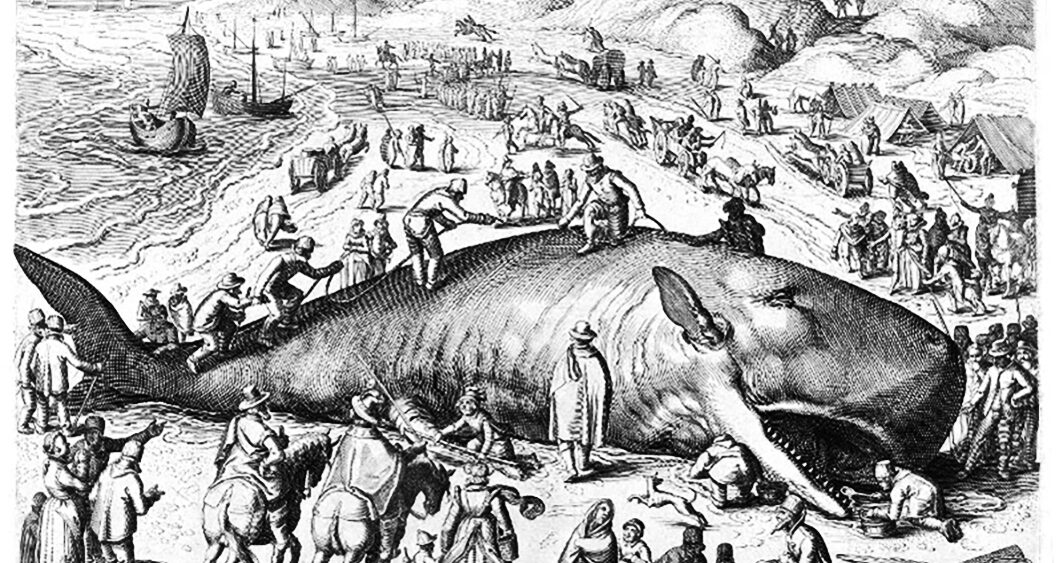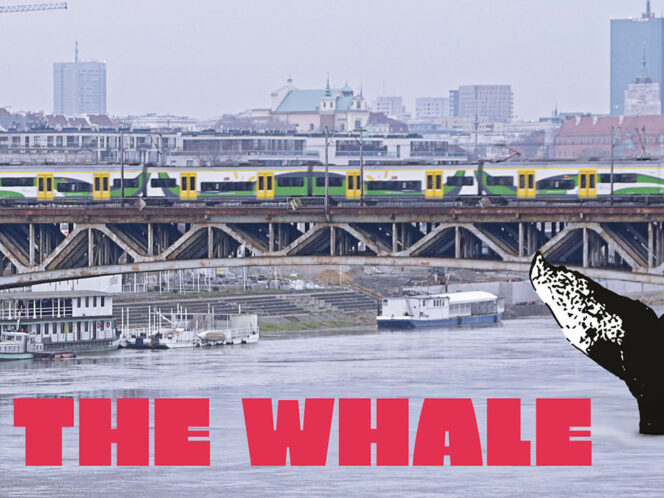
In the cold rain, the Captain Boomer Collective and I are roaming the wild beaches on the right bank of the Vistula River, wondering which spot will be best for displaying the 15-metre sperm whale. “Great view,” says Bart. We are standing on the shore, near the Zoo, opposite Warsaw’s Old and New Towns. “If we placed the whale here, the photos would be great. Spectacular.”
It’s the second half of October 2017, a cool, windless, grey day. Bart, Stijn and Beata from the Belgian artistic collective Captain Boomer came to Warsaw to choose a place for their fake whale. They are planning to bring it on a truck in December. It’d be good if the location was picturesque, but it should also be easily accessible. The fibreglass statue of the marine mammal must somehow be delivered to the very edge of the water. It is not too heavy (it weighs no more than a tonne), but it is very long, 15 metres. It is transported in one piece.
“Our first whale was in three parts,” says Stijn. “It was easier to transport it. However, we always had a problem with concealing the connections. We draped it in ropes, tried various tricks.”
Łukasz Kaniewsk








